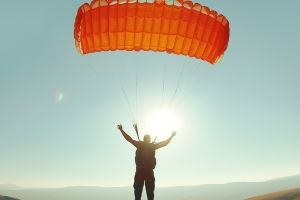Cycling on gravel can be an exhilarating experience, often leading to long and demanding rides. Proper recovery is crucial to maintain performance and ensure that the body is ready for the next outing.
However, post-ride recovery is sometimes overlooked, with food choices made randomly rather than strategically. Recovery plays a role as significant as training itself—neglecting it can negatively impact endurance and overall fitness.
Here are the key strategies to refuel and recharge effectively after finishing a gravel ride.
Replenishing Energy Stores
Restoring Glycogen with Carbohydrates
Glycogen is the stored form of carbohydrates and acts as the primary energy source for muscles. Failing to replenish glycogen levels after a ride can lead to reduced performance during the next cycling session.
Within the first hour after completing a ride, it is recommended to consume a meal—preferably in liquid form—containing approximately 1–1.2 grams of carbohydrates per kilogram of body weight. This timeframe, often called the “anabolic window,” is when glycogen replenishment occurs most efficiently. Waiting too long reduces the effectiveness of this process, leading to incomplete recovery and lower endurance in future rides. To maximize energy restoration, continue consuming carbohydrates at regular intervals every two hours.
Opting for easily digestible carbohydrates, such as rice, oats, bread, and bananas, can speed up absorption and recovery. Simple sugars found in fruit or liquid-based meals can also provide quick energy while aiding hydration.
Hydration and Electrolyte Balance
Replacing Lost Fluids and Minerals
Water makes up a significant portion of the human body, while minerals like sodium, potassium, magnesium, and calcium play essential roles in muscle function and nerve signaling.
During an extended cycling session, hydration levels drop due to sweat loss, making fluid replenishment a top priority after finishing the ride.
To restore hydration, drink at least 1.5 liters of fluids per kilogram of weight lost during exercise. A simple way to estimate water loss is by weighing yourself before and after the ride—the difference reflects the amount of fluid that needs to be replaced. Continue hydrating for at least four hours after finishing the session.
Checking pee color can be a useful indicator of hydration levels. Dark-colored pee suggests dehydration, signaling the need to drink more fluids.On the other hand, if urination becomes too frequent after consuming large amounts of fluids, it may indicate an imbalance of sodium. In this case, electrolyte intake should be adjusted to maintain optimal hydration.
Beverages containing caffeine should be limited, as they can contribute to dehydration.
Muscle Repair and Recovery
Supporting Muscles with Protein
Long and intense cycling sessions cause stress on muscle fibers, leading to micro-damage that needs repair. During the recovery phase, the body shifts from breakdown to rebuilding mode, making protein intake essential.
High-quality protein sources with minimal lipid content are ideal for muscle recovery. Good options include protein supplements, white meat, egg whites, and Greek yogurt. Consuming protein within an hour after finishing a ride, alongside carbohydrates, promotes muscle repair and helps prepare the body for future cycling efforts.
Here are a few balanced post-ride meal ideas:
- Banana with Greek yogurt
- Muesli with lightly sweetened milk
- Boiled potatoes with ricotta
- Well-cooked rice or pasta with lean fish or poultry
By focusing on proper nutrition and hydration, recovery becomes more effective, allowing for improved endurance and better overall cycling performance. Ensuring that the body receives the right balance of carbohydrates, fluids, and protein can make a significant difference in how quickly it bounces back after a demanding ride.


